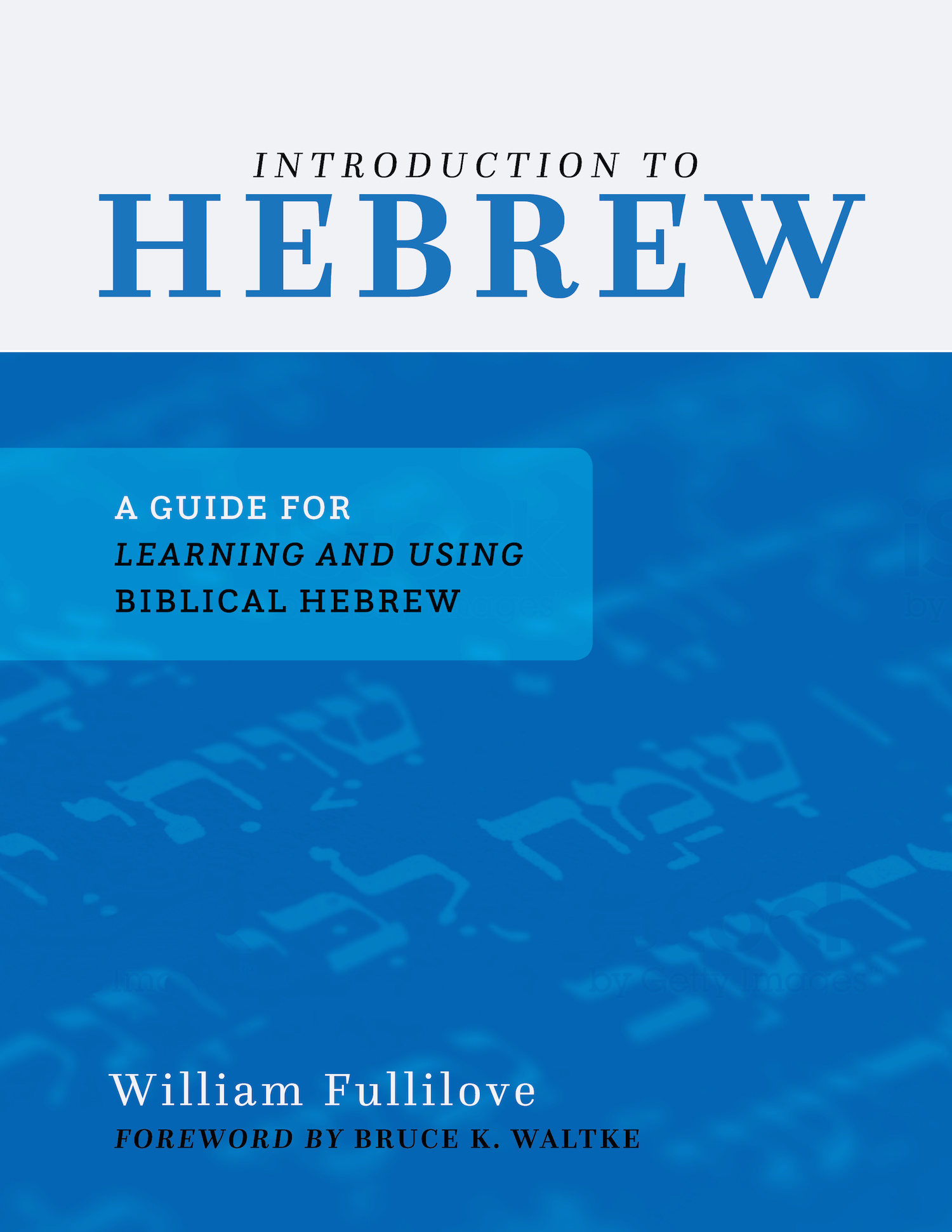Here is Bruce K. Waltke’s foreword to Introduction to Hebrew: A Guide for Learning and Using Biblical Hebrew by William Fullilove.
Foreword
Writing a grammar to teach Biblical Hebrew is difficult. This is due in part to the historical development of the Hebrew text: its consonantal text was later supplemented with matres lectionis (consonants to represent vowels) and then even later was also provided with the Masoretic vocalization. The task of teaching such a language is simply complex. All languages consist of a subject, predicate, modifiers, and particles, such as prepositions, connecting them. But the Semitic family of languages, of which Biblical Hebrew is a member, differs significantly from the Indo-European family of languages, of which English is a member. For example, the Semitic family, unlike the Indo-European family, contains an extensive verbal system to signify causation in connection with voice. Beyond this, in the college, seminary, or university environment, Biblical Hebrew often is not taught for the value of learning the language in its own right—though it certainly has such value! Instead, Biblical Hebrew is taught to enable strong, solid exegetical work, to enable students to read the Hebrew Bible/Old Testament and grasp more fully its meaning and nuance. To expect a grammar to do all of this well is simply a lot to ask.
Nevertheless, William Fullilove’s Introduction to Hebrew succeeds admirably. This book is the best introductory option for teaching Hebrew in a seminary, college, or university setting because it combines an expert understanding of the language with clear explanations that a beginning student can easily grasp. Dr. Fullilove’s teaching grammar combines several admirable features that make it so pedagogically successful:
- All its examples are from the biblical text, thereby keeping students constantly aware of their progress in reading and their growing capability.
- It quickly introduces the basic forms of the verb (Qal perfect and imperfect) in chapters 3 and 5, thereby introducing the linguistic center of the sentence as early as possible and maximizing students’ practice in parsing and translating verbs.
- The full paradigm of the strong verb is taught first, enabling students to gain a basic conception of the Hebrew verbal system before being weighed down by the myriad complexities of parsing forms built from weak verbal roots.
- Weak roots are held until the second half of the grammar and then introduced by type, enabling the student to see how the phonological impact of a weak consonant carries through the verbal system in a relatively regular way. Instead of overwhelming the student who has just been introduced to the Qal perfect, this method vastly simplifies teaching weak roots.
- Skills such as the proper use of a lexicon, the basics of word studies, and the use of the apparatus—skills that professors must usually teach in a supplemental way—are instead integrated into the grammar.
- With all of this, the grammar is not overlong, and it can easily be completed in two semesters of introductory language study.
Beyond all these features, however, what really makes this grammar sparkle is the final section of each chapter. Based on years of classroom teaching, Dr. Fullilove has crafted each final section as a set of exegetical exercises that require students to immediately apply the skills learned in that chapter to better understanding the Hebrew text. Even in chapter 1, for example, having learned only the alphabet, students are introduced to the acrostic poem and are asked (and able!) to analyze an incomplete acrostic and consider how the text of the poem is to be understood.
No better grammar is currently available to teach the beginning Hebrew student, especially the one interested in using Hebrew for the sake of biblical exegesis. In an age of slipshod preparation for ministry and exegesis, we need better-trained students who will become superior exegetes, both in the academy and in the church. This grammar is a welcome contribution to exactly that endeavor and a superb choice for the classroom teaching of Hebrew.
Bruce K. Waltke
July 2016
ENDORSEMENTS
“This is the best teaching grammar of biblical Hebrew available today. It has no rival. . . . What sets this grammar apart is its exegetical focus, showing at every turn the relevance of the language for biblical interpretation. This is the ideal textbook for students in colleges and seminaries who are preparing for Christian ministry.”
—SCOTT C. JONES, Professor of Biblical Studies, Covenant College
“Here’s the book I wish I had been given, and from which I wish I had been instructed, when I was a student of Hebrew.”
—TIMOTHY KELLER, Founding Pastor, Redeemer Presbyterian Church
“Fullilove has found ways to make the language so accessible and yet filled with such accuracy that many who thought Hebrew was beyond their reach will find it readily and comfortably right at hand.”
—WALTER C. KAISER JR., President Emeritus, Gordon-Conwell Theological Seminary
“An outstanding introduction to the language for beginning students. . . . deftly incorporating insights gleaned from the latest research.”
—ED COOK, Chairman of the Department of Semitic and Egyptian Languages and Literatures, The Catholic University of America
“Bill Fullilove’s mission is to make learning biblical Hebrew as painless, productive, and pastorally relevant as it can be. . . . An invaluable resource. I highly recommend it.”
—JAMES N. ANDERSON, Academic Dean, Reformed Theological Seminary Global Campus
“Its combination of features will aid instructors in teaching their students and help students to sustain their motivation to study the language, two areas in which so many other grammars fail.”
—C. A. STRINE, Vice-Chancellor’s Fellow and Lecturer in Hebrew Bible, University of Sheffield


Comments